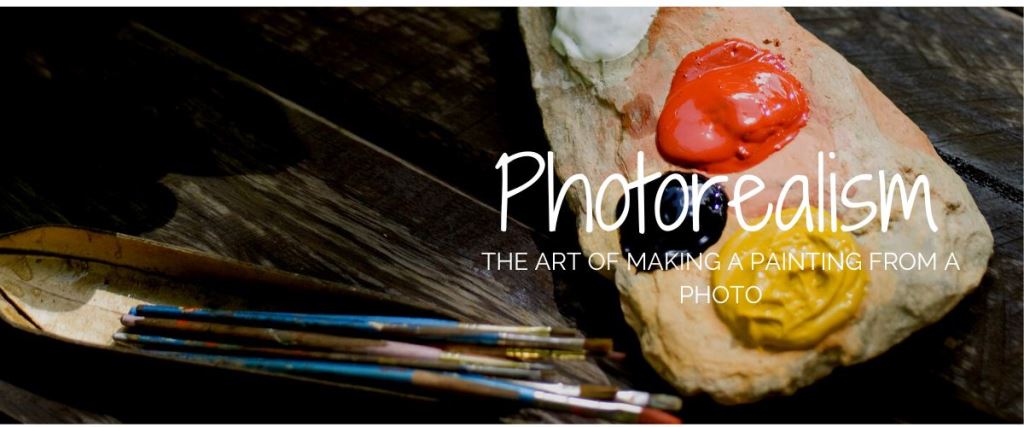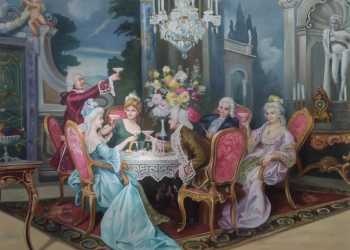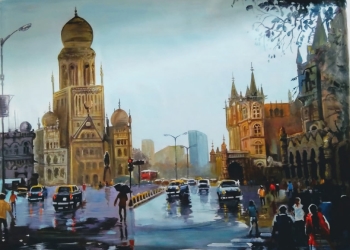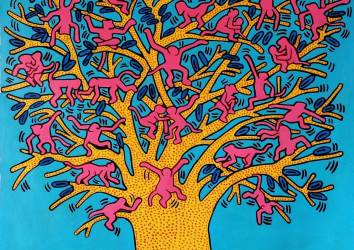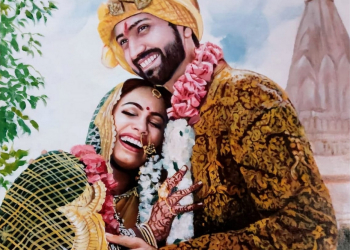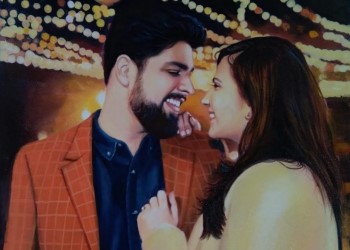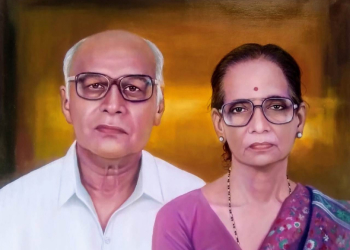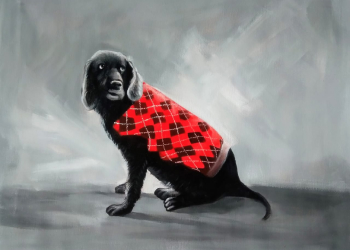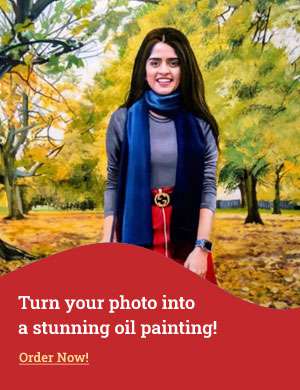What is Photorealism? What defines it? What are the 5 characteristics of Photorealism? Is photorealism still relevant? Learn all about the Photorealism art movement.
Introduction
Throughout the ages, artists have worked to depict their world through their art. From the earliest rock painters of the paleolithic age to the artist in the modernist era, representing the world, its people, and its surroundings have been an overwhelming drive of the art world. One of the earliest examples of Photorealism can be found in the late Roman period (147-30 B.C.), termed Verism, derived from Latin for true.
As the art world evolved over the centuries, techniques evolved and various styles and art movements came up. One such major art movement in the modernist era is Photorealism or the art of a making painting from a photo. Before photography developed, artists would make paintings directly by observing their subjects in their natural settings and replicating them on canvas through painting. They paid particular attention to the detailing, the study of expressions and anatomy, and the play of light and shadows. In the 1600s detail and a realistic, lifelike effect were in high demand. These artists often used numerous layers of carefully thinned oil paint to avoid any traces of brush strokes and build up rich and vivid colors in their work. Painting still life images with simplistic, subtly lit backgrounds, their candles, fruits, bones, quills, and other objects were incredibly lifelike.
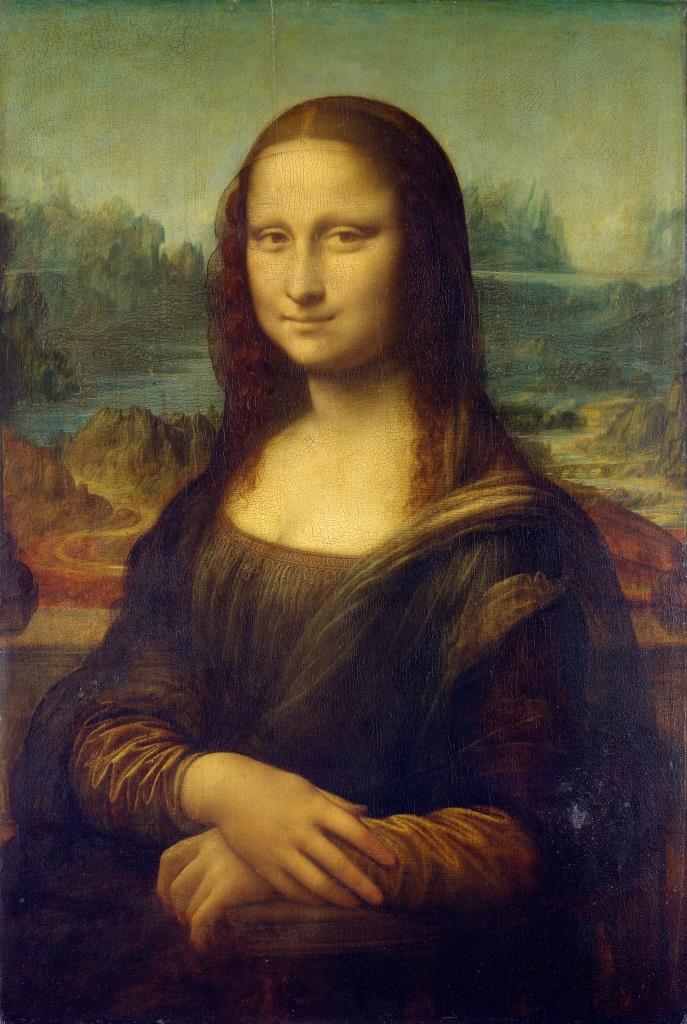 Monalisa By Leonardo da Vinci
Monalisa By Leonardo da Vinci
Handmade Art Reproductions & Landscape Paintings
Leonardo da Vinci was noted for the detailing in his oil painting portrait works, which he mastered by studying the human anatomy. Other artists like Monet, focussed their efforts on studying light and shading, trying to replicate the effect on their canvas. Dutch masters like Johannes Vermeer used similar fine brush strokes to achieve highly realistic portraits and paintings.
It can be said that Photorealism, the art of making a painting from a photo, is a movement associated with the development of the camera and its technology. The principles of realism and likeness have existed throughout the history of art for much longer than the camera has existed.
During the early stages, as camera technology developed, it rocked the foundations and principles of painting. Traditionally as an art form, paintings offered pictures of the scenes, people, and the world around us, but a photograph was suddenly able to do the same thing in a fraction of a second. Artists and painters had to reevaluate their own goals, methods, and styles they used to accomplish them. Over time, photorealists warmly embraced photographs as the primary source material to gather information to make a painting from a photo. Initially, the artists went to great lengths to hide the fact, that the painting was made from a photo, as it was deemed inappropriate to make a painting using photos as an aid.
When did Photorealism start?
As an art movement, Photorealism evolved from the pop art movement and as a counterreaction to the abstract and minimalist art movement in America in the late 1960s and early 1970s.
To give a short primer of the modern art movements, the Modern art era started with Impressionism, named after Claude Monet's oil painting work Impression, Sunrise, Soleil levant then came Post-impressionism, led by Vincent van Gogh, Paul Gauguin, Georges Seurat, Henri Rousseau, and others, followed by the Cubist movement led by Pablo Picasso, Georges Braque, and others. The cubist movement gave to Abstract expressionism led by Jackson Pollock, Mark Rothko, Williem de Kooning, and others. The abstract expressionism movement was followed by an even more extreme form of abstract art, called Minimalism, which developed in the 1960s.
What influenced Photorealism?
Both Pop art and Photorealism developed as a counterreaction to Abstract Expressionism and Minimalism, which became the dominant styles in the art world during the time. Both the art movements (pop art & photorealism) rejected the contention of the dominant art view that art needs to be stripped of its imagery and had to be reduced to basic geometric forms and shapes.
Pop art used pop culture and advertising motifs, symbols of mass production and consumption culture of the time, to reflect the exuberance of consumer culture.
By combining popular mass culture objects, kitschy elements of everyday life, humor, playfulness, irony, and everyday emotions with fine art, pop art transformed mass culture into fine art.
Photorealism, though influenced by Pop art, went in the opposite direction. Instead of using consumer imagery, symbolism, and comic book representation like Pop art, it took photos as its source material and sought to recreate the photographs as paintings on canvas as realistically as possible. In Photorealism, the photograph became the sole arbiter of reality as perceived by the artist, making a painting from a photo an acceptable art form.
What defines photorealism?
Photorealism is defined as a genre of painting where a painting is created from a photograph that appears very realistic, like a picture is called photorealism. In simple terms, making a painting from a photo is called Photorealism.
Who coined the term Photorealism?
In 1970, the Whitney Museum catalog for "Twenty-two Realists" used the word Photorealism for the first time, coined by author and art dealer Louis K. Meisel in 1969.
At the request of Stuart M. Speiser, who had commissioned a large collection of works by the Photorealists, Louis K. Meisel developed a five-point definition two years later.
What are the 5 characteristics of photorealism?
The 5 Characteristics of Photorealism, or the art of making a painting from a photo, as defined by Louis K. Meisel are:
1. The Photo-Realist uses the camera and photograph to gather information.
2. The Photo-Realist uses a mechanical or semi-mechanical means to transfer the information to the canvas.
3. The Photo-Realist must have the technical ability to make the finished work appear photographic.
4. The artist must have exhibited work as a Photo-Realist by 1972 to be considered one of the central Photo-Realists.
5. The artist must have devoted at least five years to the development and exhibition of Photo-Realist work.
Order Your Photorealistic Portrait Painting from Photo Today
What is another name for photorealism?
Making a painting from a photo, realistically, has been termed Photorealism. Photorealism is also known as Hyperrealism, Super-Realism, New Realism, Sharp Focus Realism, and Verism
Techniques of Photorealism
It must be clear by now, Photorealist painting cannot exist without the reference photograph. Photorealists use reference photographs as the source material for making a painting from a photo and attempt to recreate the image as a painting on canvas as realistically as possible. Making a painting from a photo is central to Photorealism. These types of paintings are created as oil paintings on canvas. After receiving the reference photograph, the artist will systematically transfer the image from the photograph to the canvas. Making a painting from a photo is done either by projecting the photograph onto the canvas or by using traditional grid techniques. The resulting images are often direct copies of the original photograph but are often larger than the original photograph. Creating oil paintings of this type requires rigorous training and a high level of technical prowess with mastery over reflectance and angular congruence, and the style needs to be precise and tight.
What is the difference between photorealism vs Hyperrealism?
Hyperrealism grew out of the photorealism art movement. Photorealism differs from hyperrealism in that, unlike photorealists, hyperrealists add narrative and emotion to their work.
While photorealists devote themselves to making a painting from a photo faithfully, hyperrealism adds emotions, messages, and narrative to their work.
Some Photorealism examples
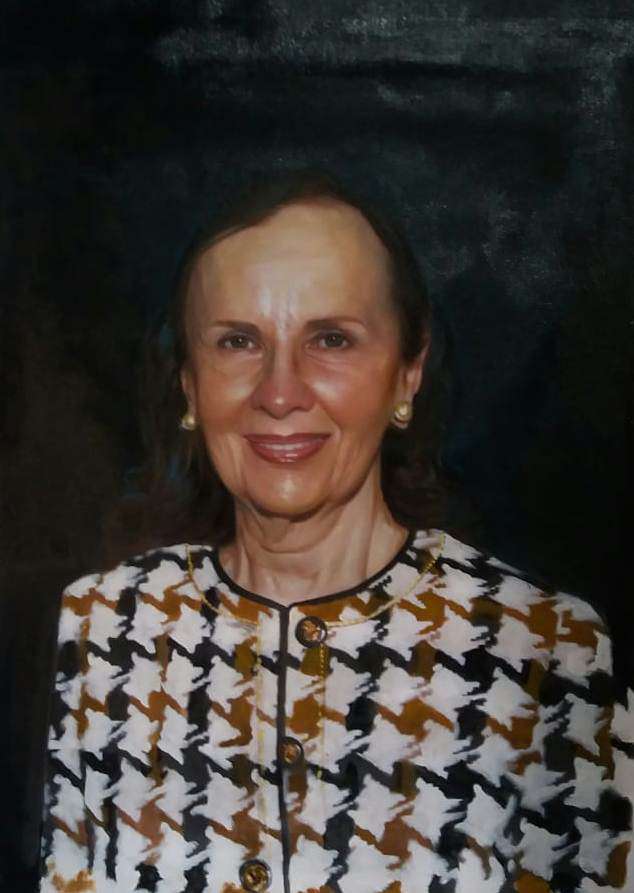
Photorealistic Memorial Portrait of Susan Wakil, (Image Source: Paintphotographs.com)
Australian Millionaire and Philanthropist
Order Your Custom Handmade Oil Portrait Painting from Photo today
Is photorealism relevant today?
Photorealism as an art movement emerged in America during the 1970s and soon spread to the rest of the world, with many European artists joining the movement.
American painters like Richard Estes, Chuck Close, Audrey Flack, Charles Bell, Robert Bechtle, Ron Kleemann, John Salt, and Tom Blackwell were among the first-generation pioneers of the Photorealism movement. With many European artists joined the movement. Contemporary artists, like Clive Head, Raphaella Spence, Bertrand Meniel, and Roberto Bernardi are considered leading artists of the Photorealism movement.
In a letter to Lois K. Meisel, artist Geroge D. Green, a leading painter, and theoretician of abstract illusionism acknowledged the debt of today's realist artists to photorealism thus:
'The battering ram of Photorealism has had a hard charge at the status quo and take back intrinsic aesthetic values. Values not tecniques. Old master technology was always been with us. For some artists, it offers personal utility. But the technique is not what this is all about. The photorealist recovered and resurrected many of the values of the so-called Old Masters, but they did so by introducing new/revolutionary techniques and processes some of which harkened back to the past times and many of which depended on new technology and products. When my work is fully understood and accepted, it will be the Photorealists and you to whom I will be indebted.'
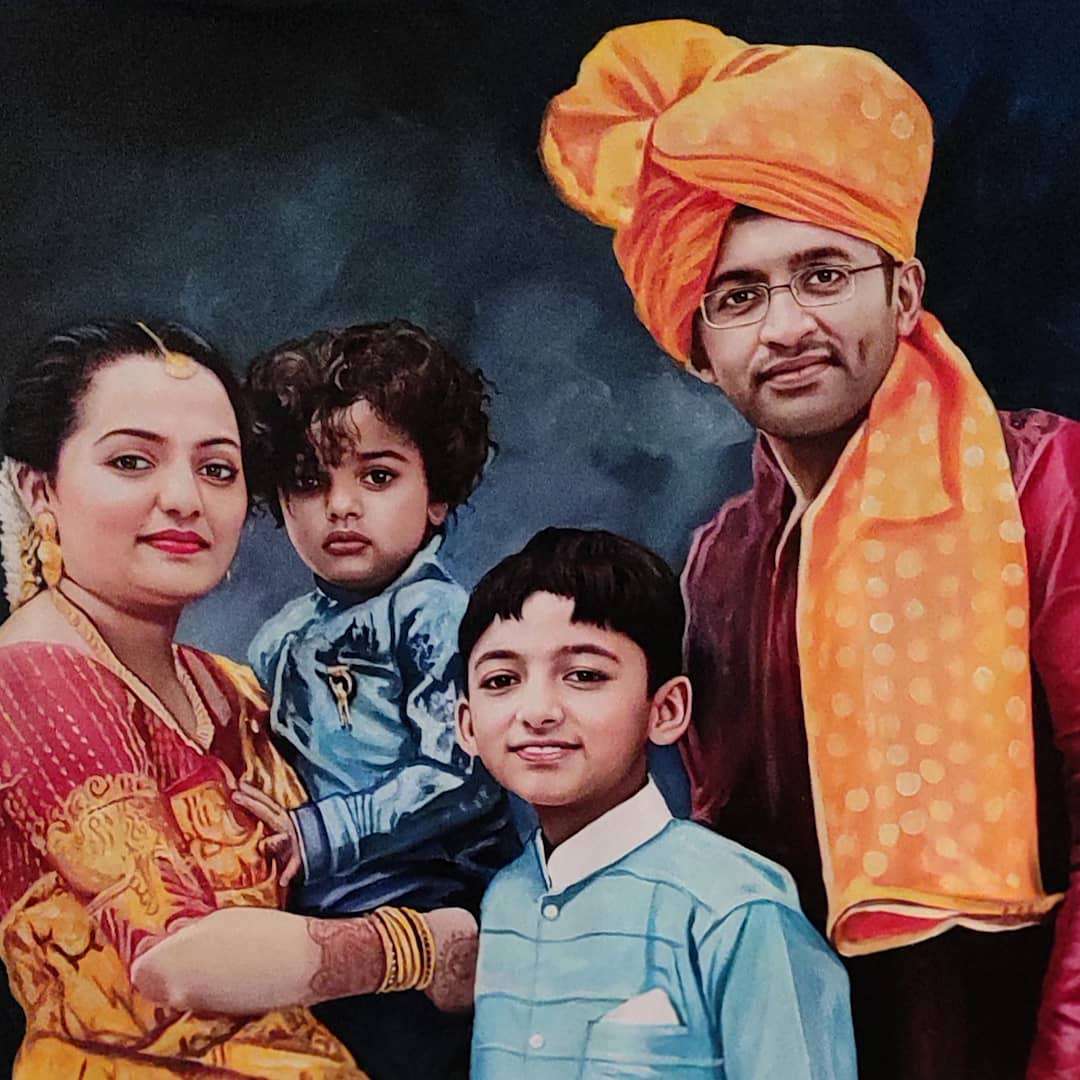
Photorealistic Family Oil Portrait Painting
Beyond the art world, photorealism's real contribution has been in taking the movement to the masses through technologies like the internet. In the earlier days, if you wanted to make a painting from a photo, you would need to find an artist, check his quality of work, and commission him to make a portrait. After giving him the commission, you will then need to pose for the artist for several hours, while he makes a draft sketch of you. Once the draft sketch is ready, the artist will then take it to his studio and start the work of making your portrait from the draft sketches. Which may take several days or even weeks. Thereafter, once the painting is ready, you will need to visit the artist for the final sitting and approval. The entire process of making a portrait painting was rendered cumbersome before the advent of photorealism.
The advent of photorealism, making a painting from a photo, has transformed the entire process of making portrait paintings. All that an artist needs now is a high-quality reference image of the subject to make an oil painting portrait. The artist will then work with the reference image and create a portrait painting based on the reference image.
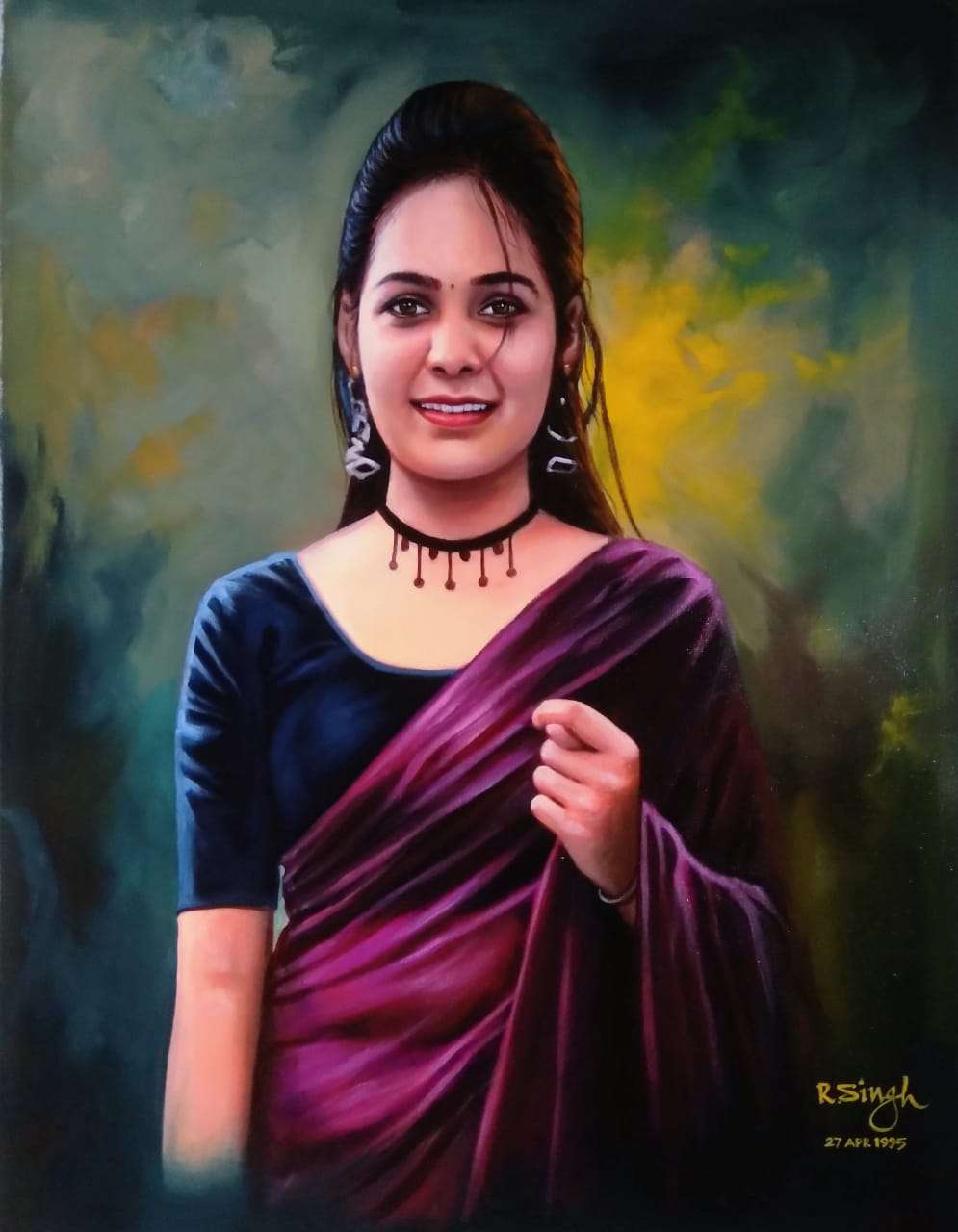 Photorealistic Single Person Oil Portrait Painting
Photorealistic Single Person Oil Portrait Painting
Using the techniques of Photorealism, the artist makes a painting from a photo. The paintings are oil painting portraits, that depict various types of portraits like individual portrait paintings, couple oil portraits, children oil painting portraits, religious and devotional oil paintings, family paintings , memorial portrait oil paintings, composite oil painting portraits, pet portraits, old masters handmade oil reproductions, creating new paintings from old photos and even handmade contemporary fine art reproductions.
The entire process of making an oil painting portrait has been simplified and made effortless by the advent of the internet and social media. The portrait can be commissioned over the internet by sharing a reference image. The artist makes the portrait painting from a photo and shares the image of the painting with the client over email and WhatsApp for approval. Once approved the painting is delivered to the client.
Photorealism and the internet have expanded the commercial reach of artists worldwide earlier localized to their neighborhoods. A client can be based out of the United States, or in the Middle East like in Turkey, UAE, Qatar, Kuwait, or Oman, and commission a portrait artwork while the artist will execute the commissioned art based in India or Asia. It is like having an artist always near me or you whether you are based in New York, California, Los Angeles, or you are based in Dubai, Abu Dhabi, Doha, Riyadh, or Muscat.
Conclusion:
Thanks to the internet and the techniques of photorealism, which enable an artist to make a painting from a photo, now dedicated websites like instapainting.com, paintyourlife.com, and paintphotographs.com, that create custom handmade oil portrait paintings and oil paintings on -demand. The paintings produced by these sites are used by patrons as elegant anniversary gifts, wedding gifts, birthday gifts, housewarming gifts, retirement gifts, and Mother's Day gifts. Photorealism continues to be hugely relevant to the world today.
About Us:
Paintphotographs.com is India's leading custom art platform. We turn your favorite photos, pics, and images into luxurious handmade portrait paintings. Our work includes handmade portraits, custom oil reproductions, charcoal drawings, and sketches. As a team of accomplished artists, we use museum-quality canvas, the best international brands of colors such as Winsor & Newton and Daler Rawney. We work with various mediums, including oil, acrylic, mixed media, graphite, and charcoal.
To order a custom handmade oil portrait painting you can visit our order now page. You can order custom Wedding Paintings, Couple Paintings, Memorial Paintings, Family Paintings, Baby portraits and Children Paintings, Photo to paintings, and Pet Portrait Paintings from Photo.
You can visit our pricing page to know the prices of our portrait paintings. To connect with us ping us on our chat messenger on the website, ping us on WhatsApp, call us at 918291070650, or drop us an email at support@paintphotographs.com
You can visit our gallery pages to see our work. We make photo to paintings, couple paintings, memorial paintings, Kids and Baby Portrait paintings, God & Religious Paintings, Old Photo to Paintings, Wedding couple Paintings & Marriage Portraits, Family Paintings, Pet Portrait Paintings, Radha Krishna Paintings, Oil Portraits of Gurus, Saints & Holy Men, Charcoal and Pencil Sketches, Custom Landscape & Cityscape paintings, Contemporary Art Reproduction & Replica Paintings, Old Master Reproduction & Replica Art, Monochrome and Black & White portrait paintings, Historical Portraits and Shivaji Maharaj Paintings, Celebrity & Political Leaders Portraits. We can also merge separate photos to create a single seamless painting called Composite portraits to add deceased loved ones to make a family oil portrait as though they were present.
Our custom handmade portraits make beautiful Anniversary Gifts, Engagement Gifts, Birthday Gifts, Retirement Gifts, Housewarming Gifts, Mother's Day gifts, and luxurious gifts for many important occasions.
Paintphotographs.com provides bespoke services for art patrons, interior designers, and architects. It helps you create the perfect pieces for residential and commercial projects and serves as a platform for artists to showcase their work.
If you are an art aficionado interested in writing a guest post on art, connect with us.
Want to read more? Check our reading recommendations below! Please refer to the Notes and Reference section for sources referenced in the article.
Like this story? Then you will love our podcasts on Spotify. Listen to our deep dives and fascinating stories from the art world. Join our nearly 20,000-strong community on Facebook, WhatsApp, and X.
Want to see our art? Join our community of 500,000+ subscribers on the Paintphotographs YouTube channel, Instagram, and Pinterest for some amazing art pics & art videos!
Notes & reference section
Photorealism and the Camera: A Conversation With Louis K. Meisel — Online - Don't Take Pictures

